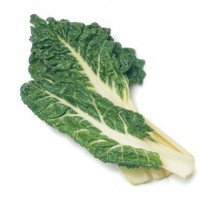
August 11- August 17, 2013
Lettuce:
Market is steady to just a little lower. Overall, we are seeing good quality on inbound.
Leaf:
Romaine and leaf markets are steady to lower. Overall quality has been good. We are seeing minor fringe burn on some romaine.
Broccoli:
Broccoli market is much higher, and supplies are very tight.
Cauliflower:
Cauliflower market is strong with very light supplies.
Carrots:
Market has remained steady out of Mexico with good quality.
Celery:
Market remains steady on both California and Eastern celery. Quality has been very good.
Strawberries:
Quality is fair to good with most lots showing some minor bruising on inbound. Also reports of the occasional moldy berry. Market is steady to up a few dollars.
Potatoes:
Market on old crop#2 will end this week. New crop #2’s expected to be much higher. This will be a very tight market for the next 3 weeks. As far as counts go we will see some old crop around yet for at least a week or so then switch to new crop which will also be higher in cost.
Onions:
Market on onions has remained steady for this week.
Citrus:
The domestic lemon market has moved up a few dollars and supplies are very short. We are getting pro-rated and having orders pushed back for days. We hope to have our first arrival of Chilean lemons arrive on 8/12. The orange market is steady with good quality.
Cucumbers:
Market on cucumbers has stayed strong for the most part. Supplies expected to improve out of New Jersey.
Peppers:
Market on peppers is much stronger with limited supplies in New Jersey and Michigan. Quality has been good.
Tomatoes:
Tomato market is steady at higher levels on rounds with light supplies. Romas are steady with good quality. Both Cherries and Grape tomatoes are stronger. Quality has been very good.
Feature of the Week
This week Primo is featuring Swiss Chard! Swiss chard, along with kale, mustard greens and collard greens, is one of several leafy green vegetables often referred to as “greens”. It is a tall leafy green vegetable with a thick, crunchy stalk that comes in white, red or yellow with wide fan-like green leaves.
Chard belongs to the same family as beets and spinach and shares a similar taste profile: it has the bitterness of beet greens and the slightly salty flavor of spinach leaves. Both the leaves and stalk of chard are edible, although the stems vary in texture with the white ones being the most tender.
Recipe of the Week
Bacon & Swiss Chard Pizza
Ingredients:
1 pound linguine
12 ounces bacon, cut crosswise into 1/2-inch slices
1 very large red onion, halved, sliced (about 6 cups)
2 large bunches Swiss chard, stemmed, chopped (about 12 cups)
1 tablespoon balsamic vinegar
3 tablespoons extra-virgin olive oil
2/3 cup grated Parmesan cheese
Preparation:
Cook linguine in large pot of boiling salted water until tender but still firm to bite, stirring occasionally. Drain, reserving 1 cup pasta cooking liquid.
Meanwhile, cook bacon in heavy large pot over medium heat until beginning to crisp, about 10 minutes. Transfer to paper towels to drain. Drain all but 2 tablespoons bacon drippings from skillet. Add onion and saute over medium-high heat until softened, about 7 minutes.
Add Swiss chard and sprinkle with salt and pepper. Add pasta cooking liquid to skillet. Toss until chard is wilted and tender, about 4 minutes. Sprinkle vinegar over; cook 1 minute.
Add linguine and oil to sauce in pot and toss to coat. Transfer to large bowl. Sprinkle with bacon and cheese. Season to taste with salt and pepper.
Fun Facts of the Week
Swiss chard isn’t native to Switzerland, but the Swiss botanist Koch determined the scientific name of this plant in the 19th century and since then, its name has honored his homeland.
The actual homeland of chard lies further south, in the Mediterranean region, and in fact, the Greek philosopher, Aristotle wrote about chard in the fourth century B.C.
Swiss chard has excellent concentrations of vitamin K, vitamin A, vitamin C, magnesium, manganese, potassium, iron, vitamin E, and dietary fiber. Swiss chard also emerges as a very good or good source of copper, calcium, vitamin B2, vitamin B6, protein, phosphorus, vitamin B1, zinc, folate, biotin, niacin and pantothenic acid.


